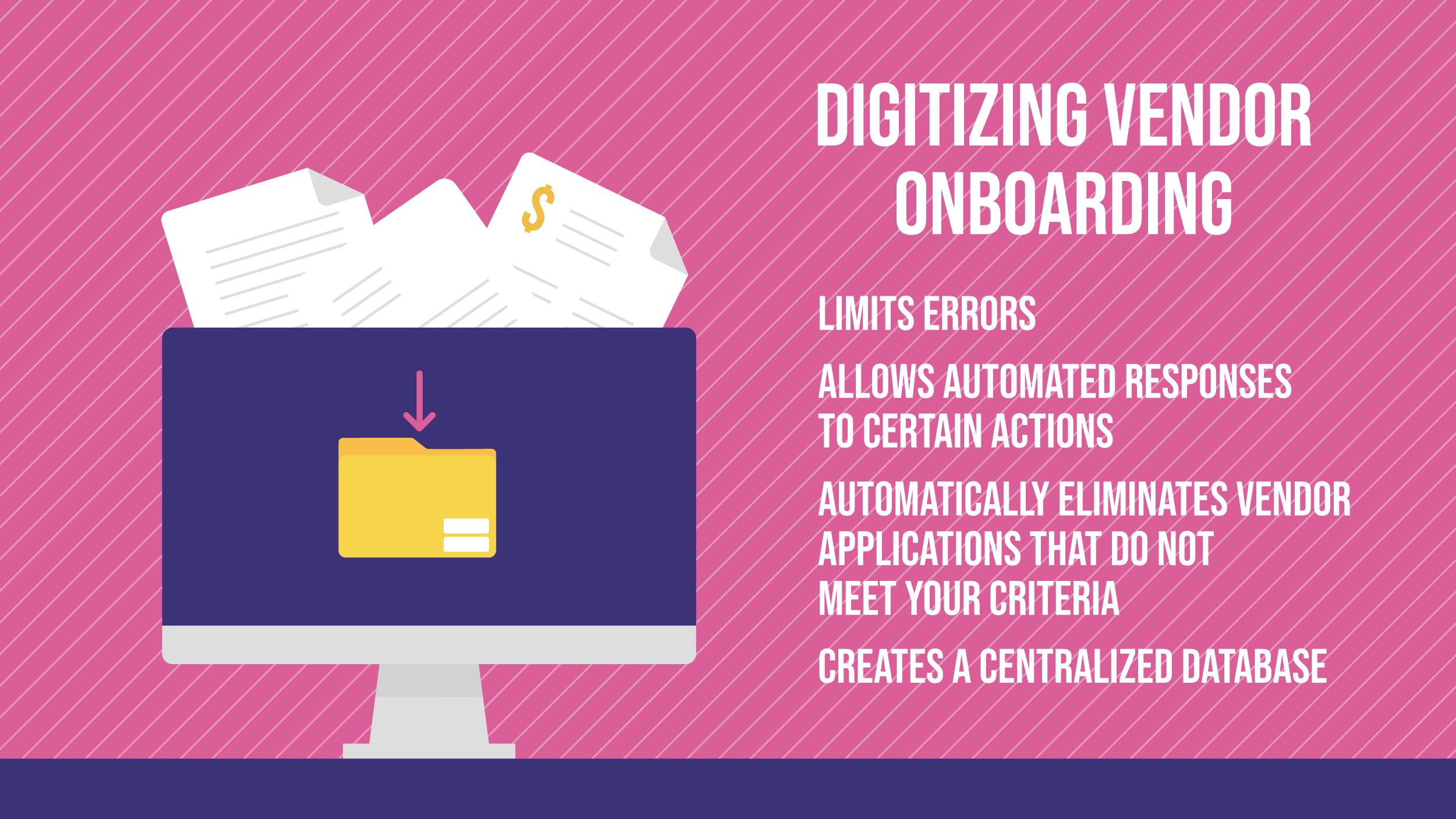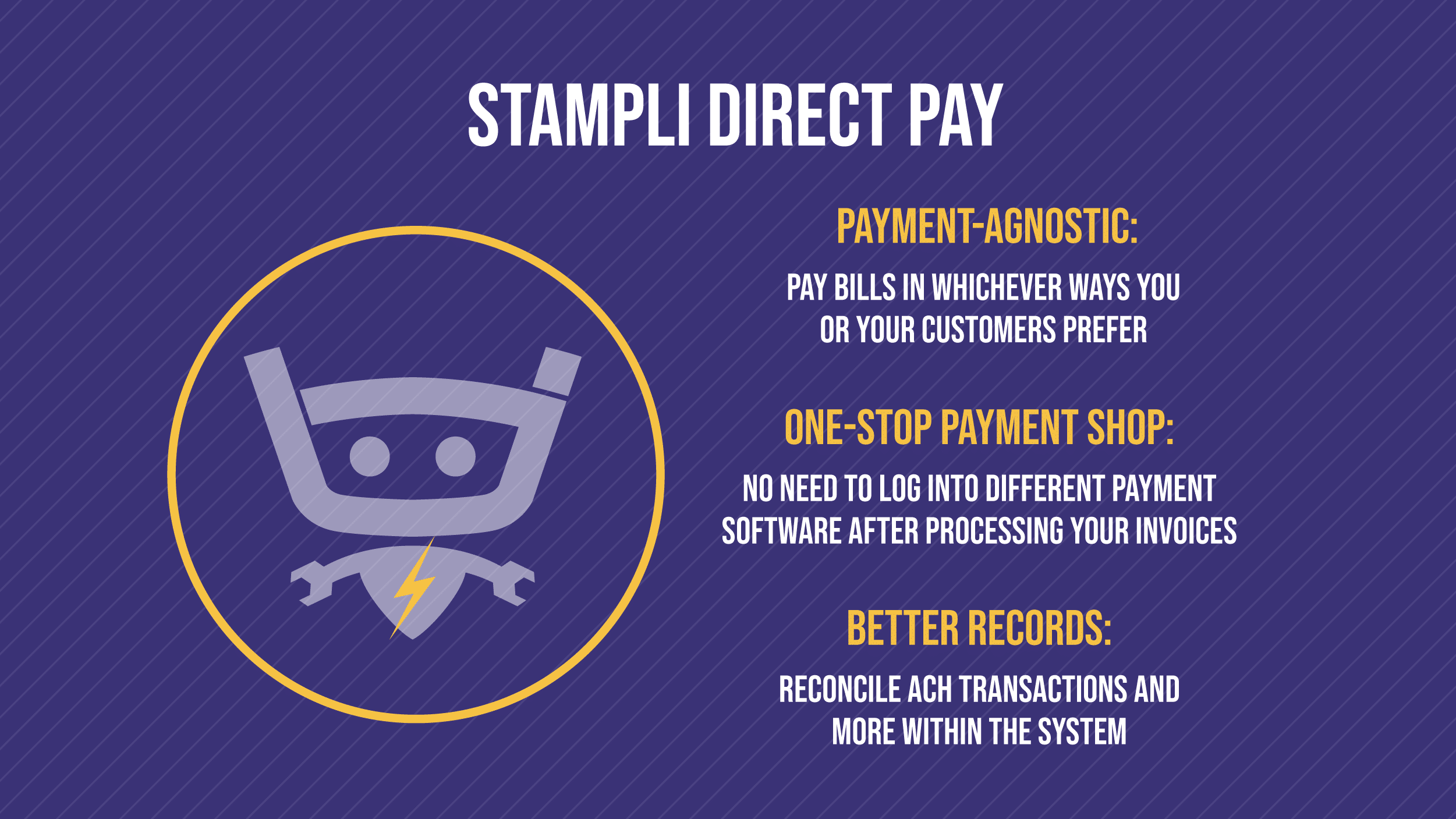Vendor Workflows from Procurement to Payment

Building an effective vendor workflow has plenty of upside to offer for your organization. A vendor workflow can be seen as a standard operating procedure (SOP), which outlines the exact steps for one or many to accomplish a specific action, such as in the case with contracting with a new vendor.
Every company needs workflows because what you don’t want to do is have every employee recreate the wheel every day. Additionally, once the ideal (vendor) workflow is established, it can be shared company-wide which paves the way for the future.
“One essential characteristic of modern life is that we all depend on systems—on assemblages of people or technologies or both—and among our most profound difficulties is making them work.”
– Atul Gawande, The Checklist Manifesto
At the end of the day, a workflow is essentially a detailed checklist—a foolproof way to work from Point A to Point B with every step carefully documented. A vendor management workflow will catalogue all the important tasks such as:
- Vendor selection
- Vendor onboarding
- Contract approvals
- Purchase orders
- Payment requests
This may not seem like a lot of work, but once you grow to the point where you have dozens or hundreds of vendors, suppliers, or contractors, freestyling each of these tasks will ultimately just create headaches (and late payments) for the accounts payable (AP) department.
Creating a seamless vendor workflow—from procurement to onboarding to payments—is a huge advantage for businesses.
For starters, a documented vendor workflow can help get your whole company on the same page. When employees are provided all the tools and direction to do their jobs, there are much fewer (good) reasons for them to ask for support. This means fewer questions and interruptions for your own management teams and fewer interdepartmental conflicts.
Second, vendor or supplier workflows can improve your organization’s relationship with those vendors. Anytime a vendor is getting paid on time is a good thing in their books, but if you also make the process of working with your organization better, you’re more likely to save costs, receive the benefit of the doubt if there’s a mistake, or potentially even gain preferential treatment in the form of competitive pricing.
Lastly, vendor workflows codify processes, which makes it easier for new employees to get up to speed faster and more efficiently. And when dealing with employee turnover the way we have to in 2021 and beyond, this is an incredibly valuable asset.
In this post, we’ll break down each step in a typical vendor workflow and provide some inspiration for what an ideal workflow might look like.
Step 1 – Vendor evaluation
When it comes to finding the proper vendor for your business, it can be a lot more complicated than just ‘finding the right tool for the job.’ When you’re looking for a 10mm wrench, you either have it in your toolbox or you don’t. When you’re talking about a long-term, multi-faceted working engagement with another business, there are layers of complexity such as price, service-level agreements, and even office politics that you need to navigate.
The most structured way to fairly and objectively evaluate vendors is with a standardized rubric. Map out several areas of the relationship such as cost, risk profile, company objective, and any other criteria that are important to your organization. If you’re looking for ideas on what to include in your vendor evaluation matrix, Smartsheet has some vendor assessment templates you can download or look to for inspiration.
Step 2 – Vendor onboarding

Before you can onboard a new vendor, you’ll likely need to get buy-in from multiple different departments. Depending on the size of your organization, this can often include the president or executive team, and you can be assured legal will also want to weigh in.
As you can imagine, the standard workflow has the potential to create tons of paperwork, which can be lost or contain errors. In order to build a more efficient workflow, you’ll need to digitize everything with online forms and electronic signatures. In this way, you can not only limit the errors (vendors will not be able to leave fields blank) you receive, you can also automate certain actions (like email notifications) based on events like approvals or signatures.
Perhaps the biggest benefit for your organization is that you can use a system to marry your criteria with the application process. This gives you the ability to automatically eliminate vendor applications that do not meet your criteria, saving your company manual reviews of bad-fit vendors.
Using software for your vendor application process not only makes things easier for your team, but it also provides enough structure that your vendors will feel confident they’ve fully completed their applications and set the tone for working with your business. Once a new vendor is approved they’ll be added to a digital, centralized database (typically an ERP or financial system) of other approved vendors typically managed by the procurement department.
Step 3 – Process payment requests and purchase orders
Now that you have a list of approved vendors who have made it though your (hopefully streamlined!) evaluation and onboarding process, all that’s left to do is pay them promptly for the goods and services they deliver.
This part of the process generally looks something like this:
- Create purchase requisition
- Obtain purchase requisition approval
- Create purchase order
- Vendor accepts purchase order
- Goods or services are delivered
- Invoices get processed
- Payment is issued
No surprises here, and if you simply wanted to make a linear checklist for your teams to fill out as they go through these steps that wouldn’t be a bad start.
But forward-thinking companies have realized that if you can digitize and centralize all the data from these steps, you can add automation to create a truly streamlined and efficient workflow. With automation, an API integration can sync your AP software with your ERP and pull open POs for matching in the invoice and payment steps. This reduces the labor of the AP department manually verifying the invoice with its supporting documentation such as delivery receipts, PO, and any other required paperwork. Less manual labor also reduces the risk of errors.
At the end of the day, using automation in your payment requests and purchase orders processes will greatly speed up approvals and delivery of each. Read more about the concept of procure to pay automation here.
As you can see, Step 3 is fairly involved and is owned primarily by the AP department—managing invoices, coding with the general ledger, and paying. So if you’re determined to build a vendor workflow that runs smoothly and efficiently from start to finish, you’re going to have to look at AP automation.
AP Automation in Vendor Workflows
At Stampli, we’ve long envisioned a better accounts payable process—less manual labor, fewer errors, reduced risk, and faster invoice processing and business-to-business (B2B) payments.
We started helping companies with invoice management and processing in 2015, and since then we’ve been named to G2’s Leader Quadrant for AP automation software for nine consecutive quarters. Our product was proven time and again to play a pivotal role in vendor workflows by integrating seamlessly with various ERPs and financial systems.

By popular demand, we introduced Stampli Direct Pay which enables customers to make ACH payments and issue touchless paper check payments. Moreover, Stampli Card provides customers with the full controls to eliminate shadow spend—by giving them the controls they need to manageall corporate credit card transactions (and invoices) in one place.
Stampli allows AP professionals to engage with suppliers via the Stampli Vendor Portal, which streamlines the process of collecting vendor data, managing vendor relations, and tracking updates. The benefit of the Stampli Vendor Portal is that it helps customers reduce the communications overhead by providing an online portal to their vendors where the status of an invoice can be accessed 24/7. This feature is of course optional, because Stampli puts the customer in the driver’s seat.
At Stampli, we truly understand that vendor relationships are a vital factor when it comes to growing a business. The foundation of a good vendor relationship is making sure the vendor gets paid on time, but we’ve realized it can go so much further. Vendor workflows featuring accounts payable automation are the key to maximizing those relationships by making the process more transparent, more convenient, and more enjoyable.
If you’d like to see how Stampli can help you build out vendor workflows that are customized to your business, schedule a demo with one of our AP Heroes today!
